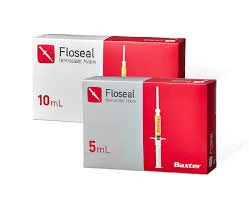36th NASS Annual Meeting Presentation: A prospective multi-center evaluation of the relationship between standing and recumbent spino-pelvic alignment in supine, lateral or prone position
Read MorePublication by Dr. Nitin Khanna on Breaking Through the ‘‘Glass Ceiling’’ of Minimally Invasive Spine Surgery.
Read MorePublication by Dr. Nitin Khanna on the Floseal only versus in combination in spine surgery: a comparative, retrospective hospital database evaluation of clinical and healthcare resource outcomes.
Read MoreAdvances in perioperative care and minimally invasive surgery have moved inpatient procedures to the outpatient setting. Enhanced anesthesia and recovery protocols are validated in the literature. No attention was given to NPO status for patients and its impact on perioperative recovery and patient satisfaction in minimally invasive spine surgery. We suggest perioperative electrolyte drink (ED) on the day of outpatient spine surgery has potential physiologic benefits and minimal risk for aspiration.
Read MorePresentation by Dr. Nitin Khanna on the Safety and Reproducibility of Sacroiliac Joint Fusion in an Ambulatory Surgery Center.
Read MorePresentation by Dr. Nitin Khanna on The Effect of Exparil (Injectable Liposomal Bupivicaine) on length of stay after outpatient Midline Fusion.
Read MorePresentation by Dr. Nitin Khanna on the Safety and Reproducibility of SI fusion in an Ambulatory Surgery Center.
Read MorePresentation by Dr. Nitin Khanna on the Accuracy and Reoperation Rate for Cortical Bone Trajectory Screws Utilizing the Cannulator Technique.
Medialized, Muscle-Splitting Approach for Posterior Lumbar Interbody Fusion research publication by Dr. Nitin Khanna.
Read MoreIncreased attention has been placed on the role of the sacroiliac (SI) joint as a pain generator and cause of low back pain. Increasing amounts of data have demonstrated improved clinical outcomes in well selected patients with SI joint fusion. Little research has focused on the clinical outcomes for SI joint fusion in the worker’s compensation population.
Read MoreMinimally invasive midline approach utilizing cortical screws has grown in popularity due to its familiar anatomy, limited dissection, and associated decreased morbidity. This approach is well-suited for bilateral “inline” cage placement after bilateral facetectomies. Many surgeons prefer to utilize a single cage, TLIF, for midline fusions to optimize time, decrease exposure, and lower costs. This novel study assessed cage position for a unilateral cage utilizing the minimally invasive midline approach.
Read MoreThere has been significant attention towards moving spine surgery to the outpatient setting as a benefit to both payers and patients. Medialized spinal fusion is a minimally invasive technique that limits the exposure to the lateral border of the facet joints. Previous studies have demonstrated the feasibility of Medialized Lumbar Spinal Fusion in the outpatient setting. Perioperative pain management protocols are essential to developing a successful program.
Read MoreThe evolution of minimally invasive spine surgery has pushed many inpatient procedures to the outpatient ambulatory surgery center (ASC) setting. The potential for shorter recovery times, cost savings and decreased infection rates are major benefits of minimally invasive outpatient spine surgery. We report our early results with the sacroiliac joint fusion (SIJF) procedure performed in the outpatient setting.
Read MoreThere has been an increased utilization of Cortical Bone Trajectory (CBT) screws in treatment of Lumbar Degenerative Spinal pathology. The benefits of this trajectory include easier ergonomics for screw placement and the ability to capture the middle column of the spine utilizing a minimally invasive single incision midline exposure.
Read MoreMeeting Presentations/Posters for ISASS 2017 by Dr. Nitin Khanna.
Read MoreMeeting and Presentations - NASS 2019 by Dr. Nitin Khanna
Read MoreSMISS 2019 Presentations and Posters by Dr. Nitin Khanna.
Read MoreSMISS 2020 Presentations and Posters by Dr. Nitin Khanna.
Read MorePublished papers of Dr. Nitin Khanna.
Read MoreCervical disc replacement is an option for patients experiencing neck and arm pain and offers unique benefits relevant to the worker’s compensation population. Increasingly, data from the general population have demonstrated excellent outcomes for cervical disc replacement surgery when compared to traditional anterior cervical discectomy and fusion (ACDF). Little research has focused on the clinical outcomes for cervical disc replacement in the worker’s compensation population, specifically regarding return to work time.
Read More


















